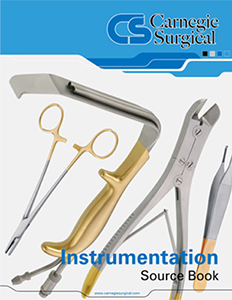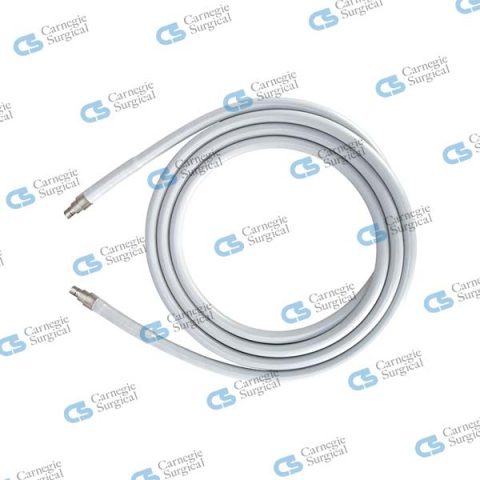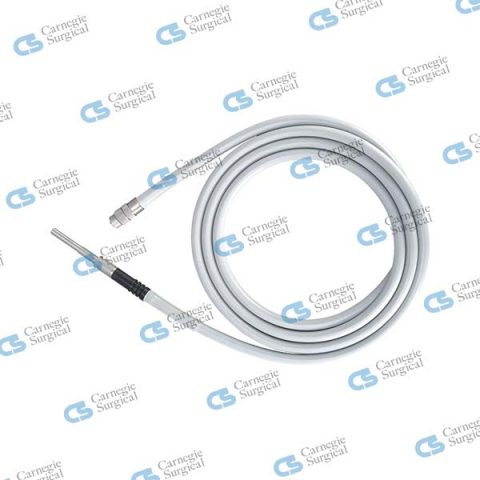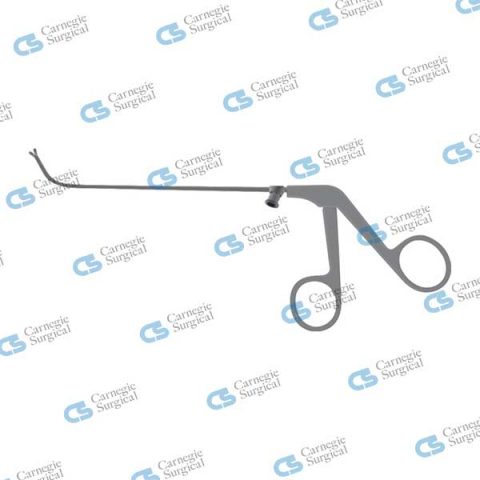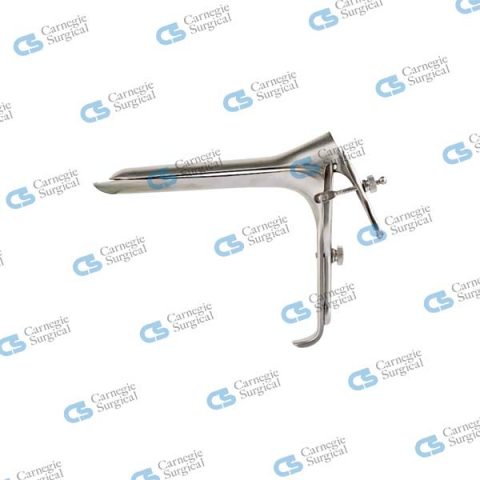Other Information
| Brand | Carnegie Surgical® |
| Specialty | Anesthesia / Intubation |
| Material | Stainless Steel |
| Grade | Premium Surgical Grade |
| Sterility | Non-sterile |
| Usage | Single use / Reusable |
| Manufacturer | Carnegie Surgical LLC |
| Latex | Latex-free |
| Known by the numbers | AS11105, AA11105, 9-3018-01, 45.75.01, 5457.01, 9-3018-02, 45.75.02, 5457.02 |
The MAGILL Intubation Forceps are the gold standard for grasping and guiding endotracheal tubes into the larynx during intubation. Their angled design allows for atraumatic insertion of the tube, while their atraumatic jaws prevent damage to the tube or the patient’s airway.
Magill forceps, also known as Magill’s forceps or Magill’s intubation forceps, are specialized medical instruments used in various procedures involving the airway and pharynx. They were designed and described by Sir Ivan Whiteside Magill, an Irish-born pioneer of anesthesia, in 1920. Magill forceps have since become an essential tool in anesthesia, emergency medicine, and otolaryngology.
Product Specifications
- MAGILL Intubation Forceps, Size Adult (24 cm)
- Length: 24 cm
- Suitable for adult patients
- Available in both reusable and single-use options
- Box of 10 single-use forceps available
- MAGILL Intubation Forceps, Size Infant (17 cm)
- Length: 17 cm
- Designed for use on infant patients
- Offered in both reusable and single-use versions
- Box of 10 single-use forceps included
- MAGILL Intubation Forceps, Size Child (20 cm)
- Length: 20 cm
- Ideal for pediatric patients
- Choose between reusable and single-use alternatives
- Box of 10 single-use forceps provided
Magill forceps have several important uses in medical procedures
- Aid in Endotracheal Tube Placement: Magill forceps are commonly used to aid the passage of an endotracheal tube into the larynx, particularly during nasal intubation. Their curved shape and rounded ends allow for better visualization and manipulation of the tube, ensuring its proper placement.
- Assist with Gastric Tube Insertion: These forceps are also used to aid the insertion of gastric tubes into the esophagus. They provide control and precision during the procedure, facilitating safe and accurate placement of the tube.
- Foreign Body Removal: Magill forceps are invaluable for removing foreign bodies from the airway or pharynx. Their grasp and precision allow healthcare professionals to safely extract objects that may be obstructing the airway and causing respiratory distress.
- Placement of Pharyngeal Packs: In cases of bleeding or other issues in the pharynx, Magill forceps are used to place pharyngeal packs. These packs help control bleeding and provide support to the affected area.
Magill forceps can be described as follows
- Twin-bladed tong-like forceps: They consist of two curved blades that resemble tongs.
- Handles for gripping: The forceps have handles that allow the user to grip and manipulate them effectively.
- Rounded ends for grasping: The ends of the forceps are rounded to provide a secure and gentle grip on objects.
- Oblique angle between handles and blades: This design feature helps prevent the forceps from obstructing the view of the airway during use, especially when combined with a laryngoscope.
- Reusable or disposable: Magill forceps are available in both reusable and disposable forms. Reusable forceps are typically made of stainless steel.
- Different sizes: They come in various sizes to accommodate patients of different ages, including infants, children, and adults.
- Polished and dull finishes: The forceps can have either a polished or dull finish, depending on the specific requirements.
- Open and closed end design: The forceps may have either an open or closed end design to aid in gripping different materials.
Method of Insertion/Use
Magill forceps are used to grasp objects under direct vision. They are commonly used alongside a laryngoscope to produce an optimal view of the larynx and displace soft tissues forward, creating space for manipulation. The forceps are employed to grasp and guide objects with precision and control during various medical procedures.
Complications
While generally safe to use, Magill forceps may have some associated complications:
- Local trauma: There is a risk of local tissue trauma if the forceps inadvertently cause injury to the surrounding structures.
- Breakage: Excessive force or mishandling can result in the breakage of the forceps.
- Difficulty grasping small objects: Open-tipped forceps may have difficulty grasping small objects, such as coins, inadvertently increasing the risk of complications.
History of Magill forceps
- Early 20th century: Ivan Magill began his career as a medical doctor and soon became interested in anesthesia and airway management. During this time, intubation techniques were evolving, but there were challenges in safely and effectively placing endotracheal tubes, especially in patients with difficult airways. Magill focused on improving the intubation process, and he introduced a curved forceps-like instrument that could be used to guide the endotracheal tube through the vocal cords and into the trachea.
- Development of Magill Forceps: Around the 1920s, Magill introduced his innovative forceps for assisting with endotracheal intubation. The forceps feature a curved design with a claw-like tip that allows an anesthesiologist or medical professional to grasp and manipulate the endotracheal tube during intubation procedures. The curvature of the forceps is particularly helpful for negotiating the natural curves and angles of the airway.
- Significance and Impact: Magill forceps revolutionized the process of intubation and airway management. Before the advent of these forceps, intubation was a challenging procedure, especially in cases of limited visibility or difficult airway anatomy. The Magill forceps significantly improved the success rates of endotracheal intubation and made the process safer and more efficient.
- Modern Usage: Magill forceps are still widely used in medical practice today, particularly in anesthesiology and emergency medicine. They are a crucial tool for managing airways during various medical procedures, such as intubation, foreign body removal, and other situations where precise manipulation of airway devices is required.
References and Links
Sir Ivan Whiteside Magill (1888 – 1986)







